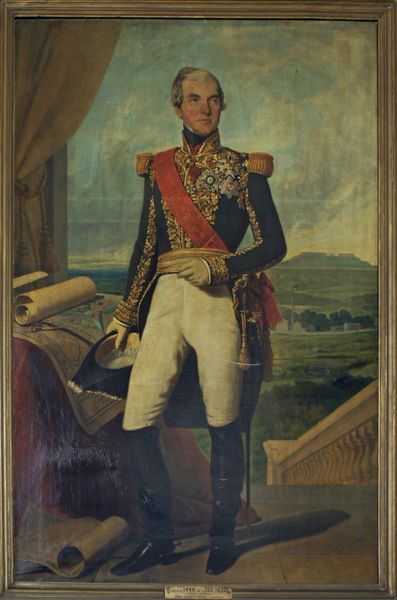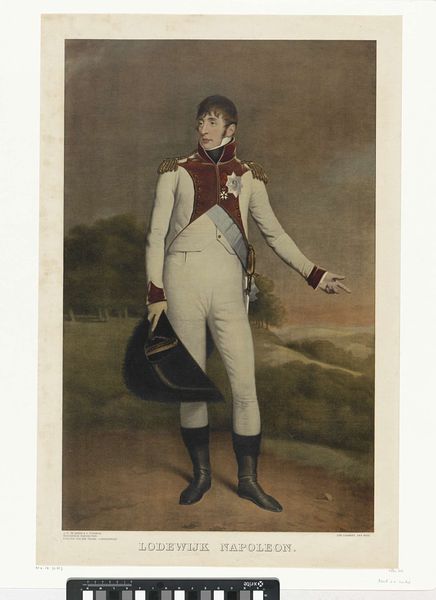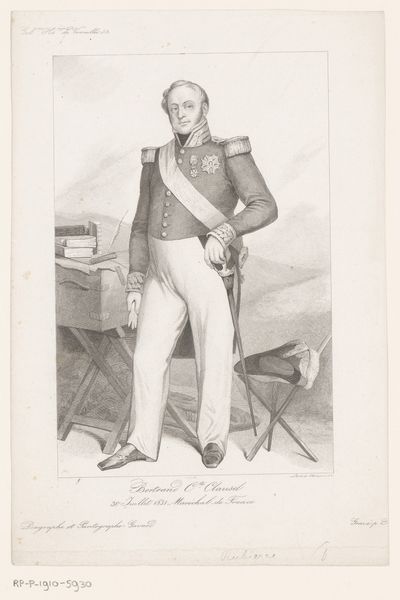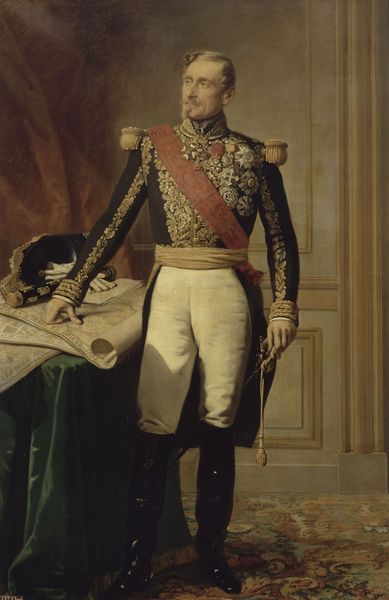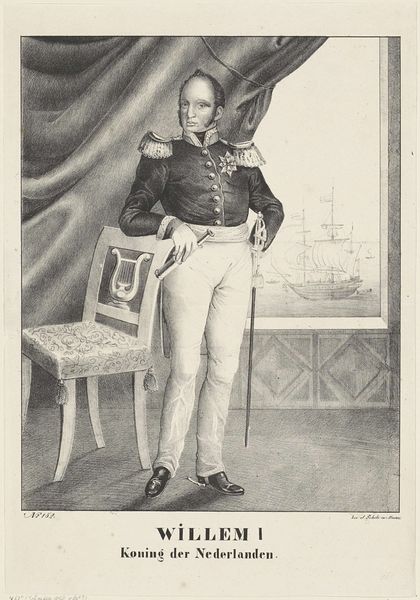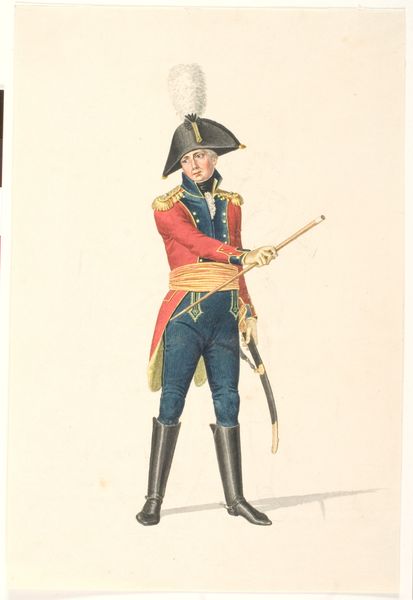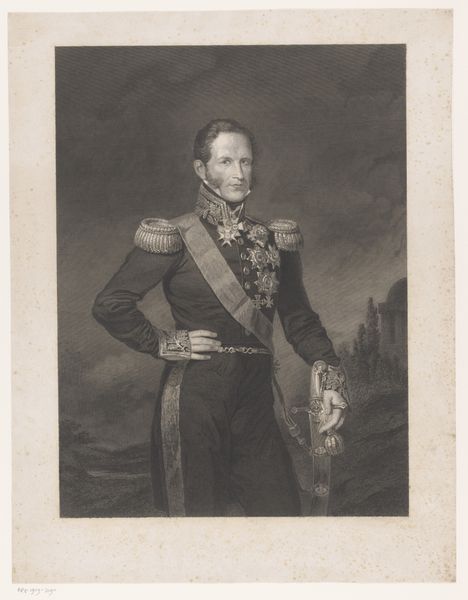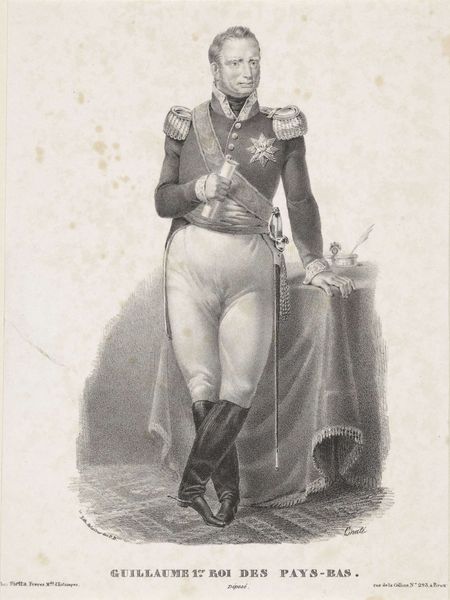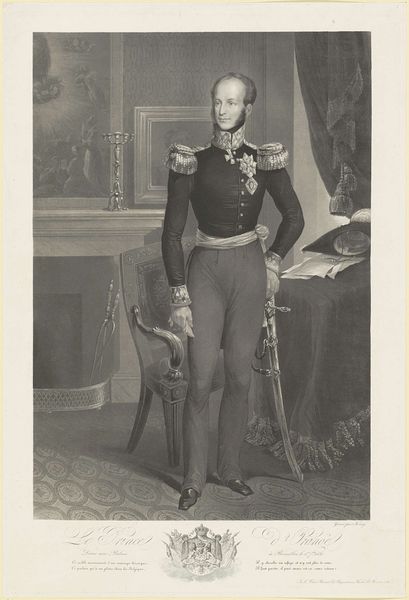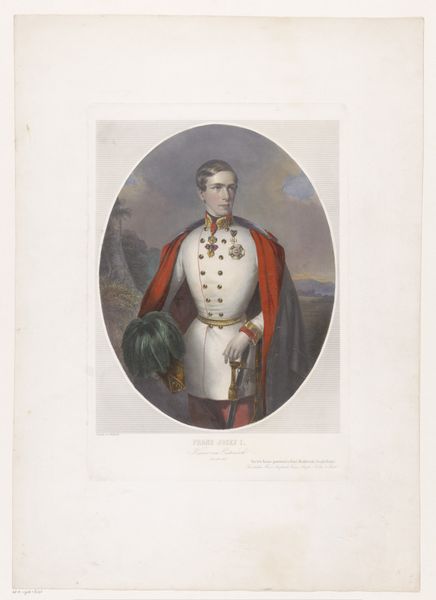
Dimensions: height 785 mm, width 540 mm
Copyright: Rijks Museum: Open Domain
This portrait of King William I of the Netherlands was made anonymously, and its date is unknown. It exemplifies the visual strategies through which monarchy sought to reinforce its legitimacy in the post-Napoleonic era. William is presented in a way that balances military strength with aristocratic refinement, a style that developed across Europe in the early 19th century. The red curtain, classical column, and ornate chair are all visual cues referencing the history of royal portraiture. The trappings of power were carefully deployed in the service of social control. To understand this image, it is important to examine the ways the Dutch monarchy sought to negotiate its position after a period of revolution and foreign occupation. Contemporary books, newspapers, and pamphlets, along with the records of the royal court, can shed light on the precise function of images like this one. The meaning of art is always contingent on its social and institutional context.
Comments
No comments
Be the first to comment and join the conversation on the ultimate creative platform.
